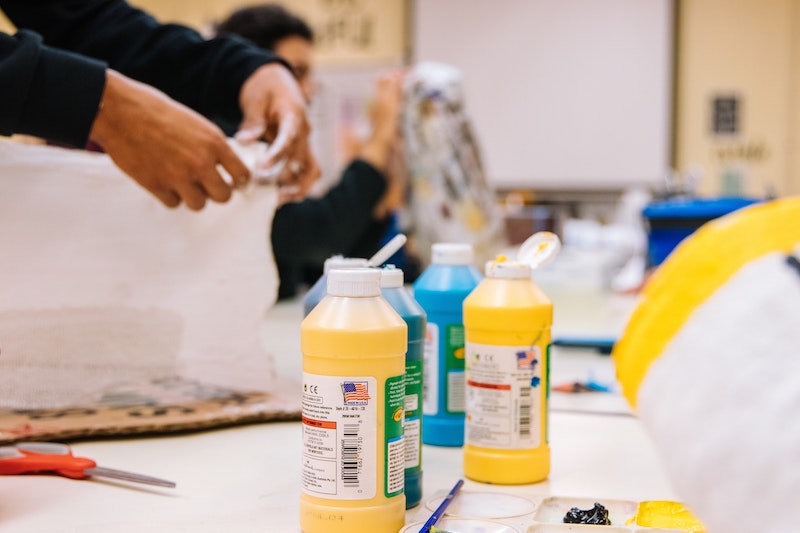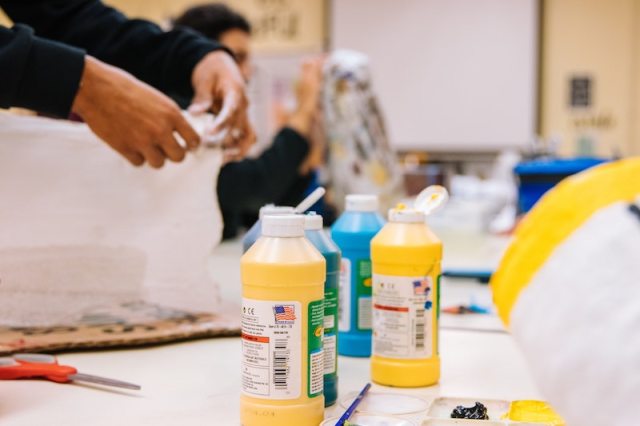
STEM, which stands for science, technology, engineering and math has been around for nearly two decades. Scientific administrators introduced the acronym in the early 2000s, and they integrated it into schools to encourage students to study these specific subjects. Since then, many other countries have followed suit and implemented STEM in their education systems. And while this has boosted math and science teachings, student engagement in these areas has declined.
Students in STEM fields in college were more likely to change their major after a few years. And math majors, in particular, changed their major the most, with 52% switching to something else. This phenomenon prompted policymakers to go back to the drawing board and search for the missing link, which they soon discovered was art. Now, educators are using a new curriculum, STEAM, to marry STEM and artistic craft and create inter-disciplinary studies that value both innovation and creativity.
Why Does STEM Need the Arts?
The art in STEAM represents visual arts, history, fine arts, music, social studies, and other creative studies. The point of combining art with different aspects of STEM is to enhance students’ skill sets. Kids need to learn this discipline to be more creative and imaginative in all other subjects. And as quickly as technology and other innovative fields are advancing, students need art-based skills to keep up within the industry.
And while some still argue that art isn’t valuable in the technology age, studies have shown that teaching art skills in schools have already proven beneficial for children. For example, one study found that students who took four years of art and music classes in high school scored 92 points higher on the SATs than those who only took a half year or less. Arts also increase a child’s motor, decision making, and creative skills, which, of course, they draw upon throughout life.
But how can educators integrate art into STEM? Some suggest creating new areas of study, which will undoubtedly happen as time goes on. However, teachers have already successfully integrated fine arts with STEM in existing classes, fields, and majors:
1. Design. Design is one field where art naturally fits into STEM. From video games to logos to buildings, this art form infiltrates nearly every area of our lives. It’s a prime example of how art can serve a practical function. In schools, teachers can implement STEAM through design by focusing on the artistic aspects of presentations, visual projects, computer graphics, and more. As students begin their college careers, those interested in design may study architecture, animation, cinematography, fashion, programming, and even photography.
Many schools have already begun to integrate design into their curriculums, and universities are beginning to offer more design-focused majors. Even museums are featuring innovative exhibitions that foster experiential learning in design and production. With this discipline on the rise, we’ll undoubtedly see more students choose it as their field of study.
2. Performing Arts. While the performing arts might not naturally coincide with STEM, they do provide students with experiences that may help them improve their science, math, technology, and engineering skills. For instance, professors teach collaboration and critical thinking in performing arts programs like drama and theater. Both skills are advantageous and sought after in STEM job fields like green energy, computer programming, and bioengineering.
We also see some aspects of the performing arts within STEM, albeit not as often as design. For example, playwrights and theater majors often use technical and persuasive writing in their work. Students often use these writing styles in the communication phase of the engineering process. So, although the two don’t seem similar, they do share a commonality through creativity.
3. Creative Planning. Another way the education system can integrate art into STEM is with creative planning. While this isn’t a class, per se, the components of creative planning are part of all STEM fields. Creative problem solving, thinking, and innovation all influence STEM and are incredibly important if students want to keep up within related industries.
For example, architecture requires people within the sector to brainstorm new designs and plans for buildings. From unique materials to different structural models, architects must think creatively with every project.
Moreover, innovation generally requires a creative mind. After all, it entails creating something new or improving an already-existing object or system. And to do that, STEM fields need creative thinkers and planners. Luckily, the arts can function as a training ground for these talents.
STEM & the Arts Fit Together
It is worth noting that the goal of art in STEAM isn’t to teach art to STEM students, although, in some cases, it does. However, those studying science, engineering, and other STEM-related subjects are already quite creative. They don’t lack ingenuity. So, the goal of integrating art into STEAM curriculums should be to teach students how to apply this subject in real-life situations. How can a student creatively solve a design issue? Or how might they use their creative teachings to help them better communicate their project plans?
With this in mind, educators can find a balance between STEM and the arts by integrating both within established fields of study like design, performing arts, and creative planning. However, art is also a natural component of many other STEM disciplines. However, finding ways to apply this creativity in real situations may be more difficult, especially in a classroom setting.
While policymakers and educators search for new ways to integrate the two subjects, one thing is certain—students deserve to learn about both equally. Merging these two types of education will allow students the space to think creatively, problem-solve, and develop essential skills which they can use in any field.
Of course, this union of differing subjects is also a major benefit to society as the nation continues to be a leader in design and innovation. Investing in the arts today will inevitably make for a brighter, more innovative future—for each individual and the entire world.











